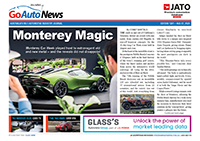 1 Nov 2000
1 Nov 2000
IF BMW disappointed with its first American-made export – the underwhelming Z3 – then its first SUV, the X5, just served to highlight how brilliant the Bavarian company can be.
Loosely based on the 1995-2003 E39 5 Series – and a better vehicular base probably doesn’t exist – the X5 did not betray its BMW origins in the dynamic, refinement or head-turning department one iota.
In fact it remained at the top of its heap, fending off much newer rivals, right up to its demise in 2007.
Boasting a unitary body, independent suspension and full-time 4WD technology, the X5 was clearly designed to excel on-road, with some light off-road ability available.
Initially a 210kW/410Nm 4.4-litre V8, tied to a five-speed Steptronic sequential automatic gearbox and featuring luxuries such as self-levelling suspension, side and curtain airbags, leather upholstery, and a vast array of electronic driver aids.
Only a propensity for premium-unleaded petrol ruined a true luxury SUV.
It was joined from March ’01 by a 170kW/300Nm 3.0-litre in-line six-cylinder unit, and offered most of the 4.4 V8’s features in a somewhat more parsimonious package, as well as the availability of a five-speed manual gearbox.
But the real surprise was the turbo-diesel – the first BMW in Australia to offer this type of engine.
With 135kW and 390Nm from a 2.7-litre DOHC 24-valve six-cylinder unit, it proved instantly popular with X5 buyers when it was released in March ‘03. Both a five-speed auto and manual were available on this vehicle.
At the other end of the scale came the thundering 4.6is from February ’02, which provided neck-snapping acceleration courtesy of its 255kW/480Nm 4.6-litre V8 engine mated to a five-speed automatic.




















